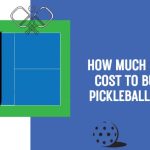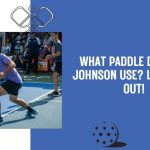Curious about the popularity and nature of pickleball? You may envision a game involving pickles and balls if the term is unfamiliar. However, it’s not a food-related battle or a trick. Instead, pickleball is a sport that blends elements from tennis, badminton, and table tennis.
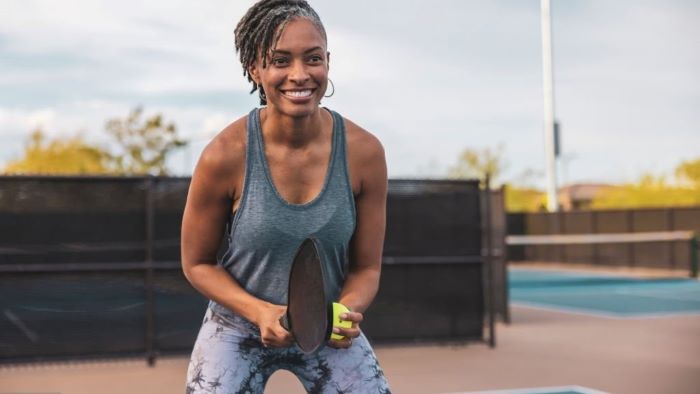
Moreover, pickleball provides numerous advantages for both your physical and mental well-being. This article delves into the muscles engaged during pickleball and suggests effective training methods to enhance your game and overall health.
Therefore, let’s delve into the realm of health benefits!
What Muscles Does Pickleball Work?
Pickleball is a full-body workout that engages various muscle groups in your upper body, lower body, and core. Here are some of the main muscles that are worked during a game of pickleball:
Upper Body Muscles
- Shoulders: The shoulders are the most flexible joints in your body and are used for almost every arm movement in pickleball. Whether serving, smashing, volleying, or dinking, you need strong and stable shoulders to execute these shots. The shoulder muscles include the deltoids, rotator cuff, and trapezius.
- Triceps: The triceps are the muscles on the back of your upper arm that help you extend your forearm. They are especially involved in backhand strokes, such as dinks, drives, and slices. The triceps also help stabilize your elbow joint and control your paddle angle.
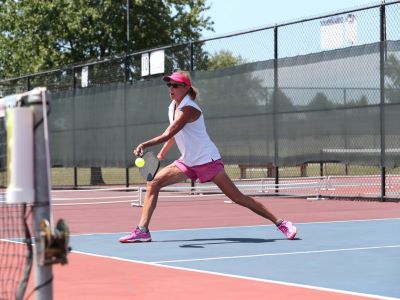
- Biceps: The biceps are the muscles on the front of your upper arm that help you flex your forearm. They are especially involved in forehand strokes like lobs, topspins, and drop shots. The biceps also allow you to lift your arm and paddle up to prepare for a shot.
- Forearms: The forearms are the muscles that connect your elbow to your wrist. They are responsible for gripping the paddle and adjusting your wrist position. They are used constantly in pickleball, as you need to tighten, loosen, or change your grip depending on the type of shot you want to make.
- Chest: The chest muscles include the pectoralis major and minor, which help you move your arm across your body. They are activated when you swing your paddle forward or backward, such as in a powerful backhand drive or an overhead smash.
- Back: The back muscles include the latissimus dorsi, rhomboids, and erector spinae, which help you move your arm up and down and rotate your torso. Serving, volleying, or twisting your body to hit from different angles activates them.
Lower Body Muscles
- Glutes: The glutes are the muscles in your buttocks that help you extend your hip and stabilize your pelvis. They are essential for pickleball, allowing you to move forward, backward, sideways, or diagonally on the court. They also help you generate power from your lower body when hitting the ball.
- Quads: The quads are the muscles on the front of your thighs that help you extend your knee and flex your hip. They are important for pickleball, enabling you to run, jump, lunge, or squat on the court. They also help you absorb the impact from landing or changing directions.
- Hamstrings: The hamstrings are the muscles on the back of your thighs that help you flex your knee and extend your hip. They are important for pickleball, as they assist you in running, stopping, or pushing off on the court. They also help you balance and stabilize your knee joint.
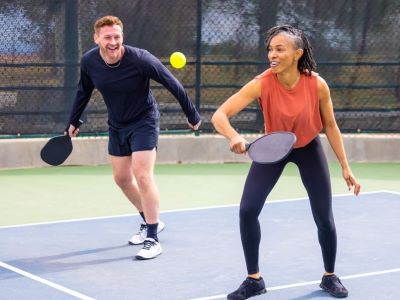
- Calves: The calves are the muscles on the back of your lower legs that help you point your toes and lift your heels. They are important for pickleball, allowing you to sprint, shuffle, or tiptoe on the court. They also help you cushion and propel yourself when moving or hitting.
Core Muscles
- Abs: The abs are the muscles on the front of your abdomen that help you flex and rotate your spine. They are crucial for pickleball, as they enable you to bend forward or sideways to reach low balls or twist your torso to hit balls from different sides. They also help you maintain good posture and stability when moving or hitting.
- Obliques: The obliques are the muscles on the sides of your abdomen that help you rotate and bend your spine laterally. They are crucial for pickleball, allowing you to turn quickly or lean sideways to hit balls near the net or sideline. They also help you transfer power from your lower body to your upper body when hitting.
- Lower Back: The lower back muscles include the erector spinae, multifidus, and quadratus lumborum, which help you extend and stabilize your spine. They are crucial for pickleball, as they enable you to stand upright or arch backward to hit high balls or overheads. They also help you prevent or reduce lower back pain or injury.
Benefits of Working the Muscles
Working the muscles used in pickleball can benefit your physical and mental health. Some of these benefits are:
- Improved Cardiovascular Fitness: Pickleball can increase your heart rate and blood circulation, lowering your blood pressure, cholesterol, and risk of heart disease or stroke. It can also improve oxygen uptake and delivery, enhancing endurance and stamina.
- Improved Bone Density: Pickleball can stimulate your bones to grow stronger and denser, preventing osteoporosis or bone loss. It can also reduce your risk of fractures or injuries from falls or impacts.
- Improved Muscle Mass: Pickleball can challenge your muscles to contract and relax, increasing their size and strength. It can also boost your metabolism and burn calories, which can help you maintain or lose weight.
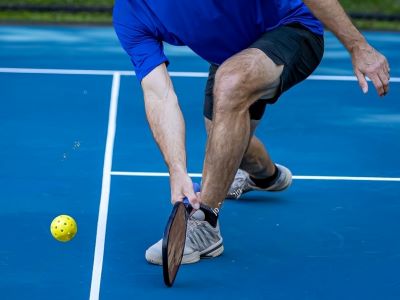
- Improved Hand-Eye Coordination: Pickleball can train your eyes to track the ball and your hands to control the paddle, improving your hand-eye coordination and reaction time. It can also enhance your spatial awareness and accuracy, which can help you hit the ball more effectively.
- Improved Agility and Balance: Pickleball can require you to move in different directions and speeds, which can improve your agility and balance. It can also strengthen your core muscles, which can help you stabilize your body and prevent falls or injuries.
- Improved Mood and Mental Health: Pickleball can release endorphins and serotonin, which are natural chemicals that make you feel happy and relaxed. It can also reduce stress, anxiety, depression, and cognitive decline. It can also provide social interaction and fun, boosting your self-esteem and well-being.
How to Train the Muscles?
To train the muscles used in pickleball, you need to do two types of exercises: strength and flexibility. Strength training involves using resistance to make your muscles work harder, while flexibility training involves stretching your muscles to make them more elastic.
Here are some tips on how to train the muscles for pickleball:
Strength Training
You can use free weights, machines, bands, or bodyweight exercises to strengthen your muscles. You should aim for two to three sessions per week, with at least one day of rest between sessions.
You should focus on the major muscle groups used in pickleball: the shoulders, triceps, biceps, forearms, chest, back, glutes, quads, hamstrings, calves, abs, obliques, and lower back.
You should perform eight to 12 repetitions of each exercise for two to three sets, with a moderate to heavy weight that challenges you but allows you to maintain good form. You should also vary your workouts and intensity to avoid plateaus or boredom.
Flexibility Training
You can use static or dynamic stretches to improve your flexibility. Aim for at least 10 minutes of stretching before and after each pickleball or strength training session.
You should focus on the major muscle groups used in pickleball and the joints involved in pickleball movements, such as the shoulders, elbows, wrists, hips, knees, ankles, and spine. You should hold each static stretch for 15 to 30 seconds without bouncing or forcing it.
You should perform each dynamic stretch with smooth and controlled movements for 10 to 15 repetitions.
FAQs
The muscles that get sore from pickleball are usually the ones that are used the most, such as the shoulders, triceps, forearms, glutes, quads, and calves. These muscles can get tired or inflamed from overuse or improper technique.
The physical benefits of pickleball include improved cardiovascular fitness, bone density, muscle mass, weight management, hand-eye coordination, agility, and balance. Pickleball can also reduce the risk of heart disease, stroke, osteoporosis, and injuries.
Yes, pickleball can build leg muscles, especially the glutes, quads, hamstrings, and calves. These muscles are involved in running, shuffling, lunging, squatting, and changing directions on the court. They also help generate power and stability when hitting the ball.
Yes, pickleball can get you in shape, as it is a full-body workout that burns calories and strengthens your muscles. It can also improve mood and mental health by releasing endorphins and serotonin, reducing stress and depression, and providing social interaction and fun.
Wrap Up!
Pickleball is a sport that works many muscles in your body and provides many benefits for your health. You can improve your game and your well-being by training the muscles used in pickleball with strength training and flexibility training.
So what are you waiting for? Grab a paddle and a ball, and let’s play pickleball!

I am a professional physiotherapist and the author of the BallSportsPro. I worked with athletes of all levels, from amateur to professional, and i helped them overcome injuries and improve their performance. I am a certified Pickleball instructor and has been playing the sport for over 10 years.


